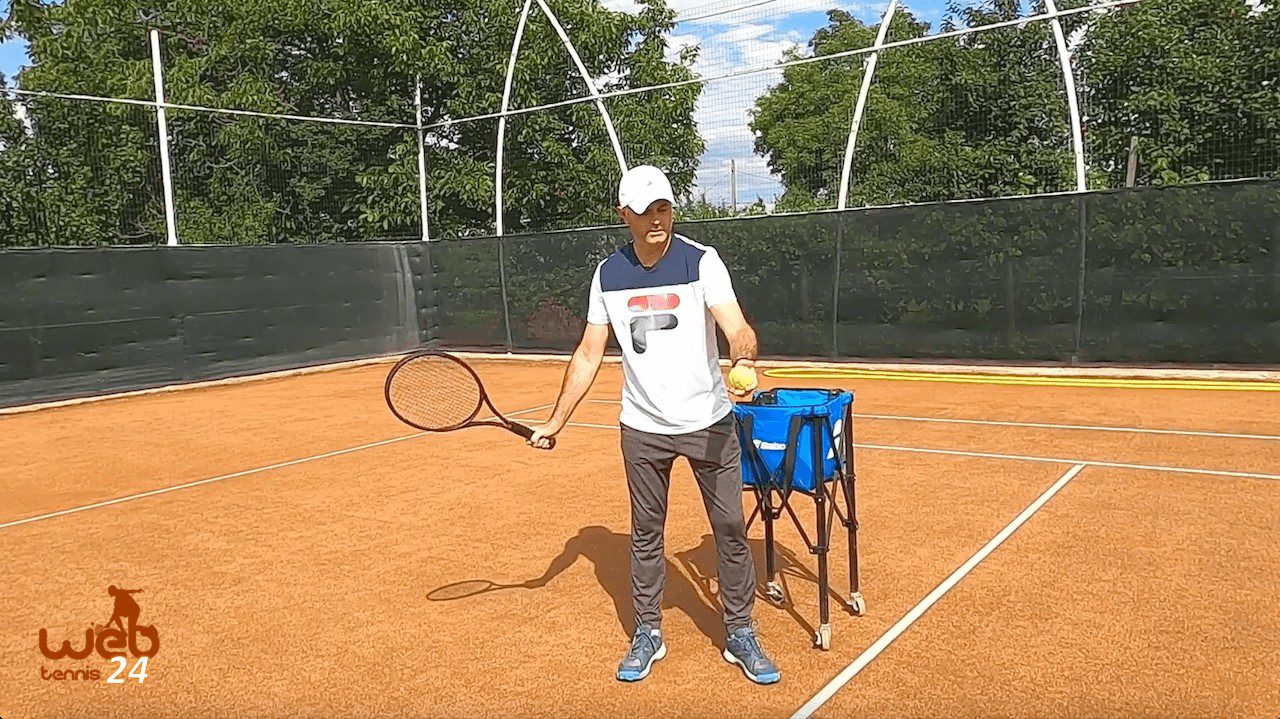How to Master Tennis Ball Feeding: Technique and Progression Drills
I teach tennis feeding the way I wish someone had taught me: simple, repeatable, and focused on control. In this article, I break down tennis ball feeding step by step so you can feed practice partners or students like a pro.
I use the continental grip because it gives me versatility – flat, light topspin, or even a touch of slice – while keeping feeds consistent and easy to control, especially during group drills.
Why I Use the Continental Grip for Tennis Ball Feeding
I call it Continental or ‘hammer’ grip because you hold the racket like you would a hammer. That grip keeps the racket face slightly open, which helps clear the net when you are close and prevents excessive topspin that can bury feeds into the net.
When you use a forehand grip like semi-western, the racket plane closes and naturally produces more topspin.
For starting rallies or teaching beginners, I prefer feeds with minimal spin so the receiver gets an easy ball.
Key Technical Principles
Before you start drilling, lock these technical cues into your routine. They are short and specific, so you can repeat them until they become automatic.
- Grip: Continental, relaxed grip.
- Wrist and forearm: Keep a roughly 90-degree angle between the forearm and racket with the wrist locked. No collapsing or excessive wrist flicking.
- Elbow position: Keep the feeding elbow close to your body. Think of your arm as a pendulum with the elbow anchored.
- Backswing: Short backswing. Start the racket just slightly behind the shoulder line – no big swing. The goal is a push, not a stroke.
- Contact: Toss the ball with your palm up, lift it gently, and push it with the slightly open racket face (about 10 to 20 degrees open). Minimal follow-through.
- Finish: Stop with the racket pointing toward the target. Do not finish with a full forehand follow-through.
- Weight transfer: Start with the weight on your back foot and transfer to the front foot during the push.
Progression Drills I Use
Progression builds control and consistency. I use three simple stages so you and your students can feel success quickly.
- Close to the service line: Stand just behind the service line with a basket of balls. Continental grip, wrist locked, elbow close. Toss palm up, lift the ball gently, push it over the net – no swing. Aim to get the ball just over the net. Practice until you feel stable.
- Step-back routine: After you make three consecutive successful feeds over the net, take one step back. Repeat the three-feed step-back pattern until you reach the baseline. This gradual increase in distance forces a slightly longer preparation while preserving the short push action.
- Baseline feeds: From the baseline, you will take the racket a bit further back to give yourself room, but keep the short backswing and locked wrist. Maintain the slightly open racket face to produce a flat-ish feed with minimal spin. Aim for the feed to go about three feet over the net and land just beyond the service line so the receiver gets a comfortable first ball of the rally.
Common Mistakes to Avoid
Watch out for these pitfalls:
- Letting the wrist collapse or using too much wrist action. That kills consistency.
- Using a forehand grip for feeding. It often produces too much topspin and nets the feed – especially when close to the net.
- Over-swinging and following through like a normal forehand. Feeds should be a controlled push with a short follow-through.
- Elbow away from the body. That creates a big swing and less control.
How I Use Tennis Ball Feeding in Group Coaching
For rapid feeding in group lessons I rely on the continental grip because it lets me feed quickly and accurately without sending the balls into the net. When players need many reps, I keep feeds low-spin and flat so recipients can focus on rhythm and footwork instead of fighting varying bounce and heavy topspin.

What grip should I use for tennis ball feeding?
Use the continental grip. It gives you versatility to feed flat, slightly spun, or sliced balls and helps you clear the net when you feed from close in.
How do I hold my wrist and racket?
Keep the wrist locked with about a 90-degree angle between the forearm and the racket. Maintain a relaxed but steady grip and avoid collapsing the wrist.
Where should I stand and how should I progress?
Start just behind the service line and feed until comfortable. After three successful feeds, move one step back. Repeat until you reach the baseline and can feed consistently from there.
How high and where should the feed land?
Aim for the ball to clear the net by about three feet and land just past the service line (see the video above). That gives the receiver an easy, low-spin ball to start the rally.


0 Comments